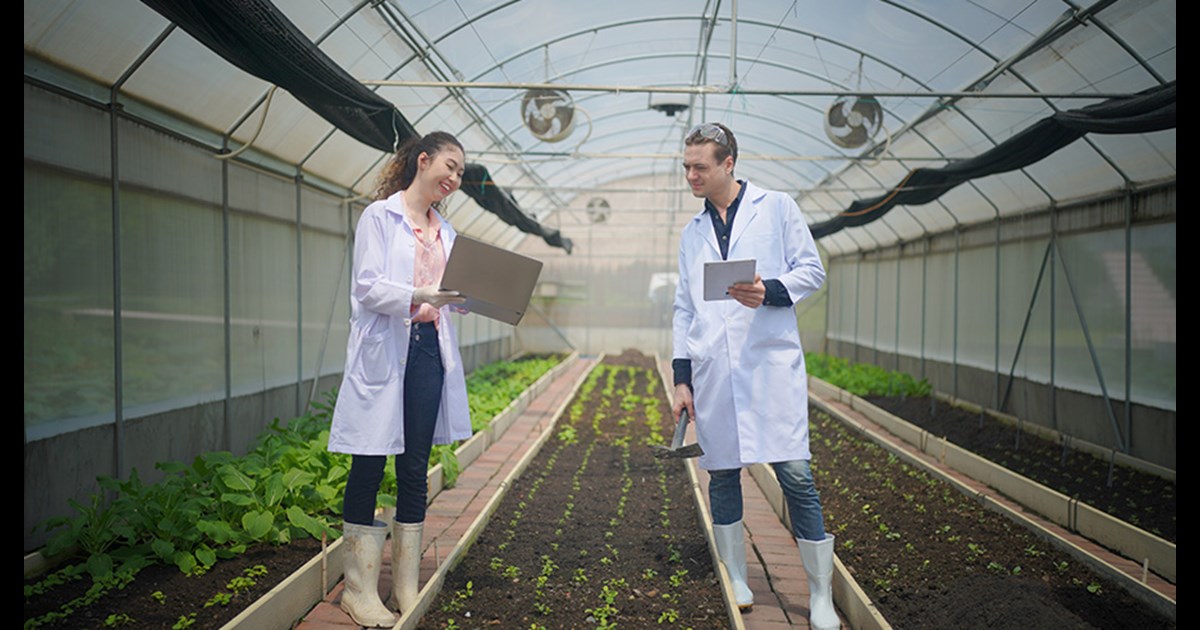Climate change and the future of smart farming
Is it still considered a monsoon season if it lasts three months? Can heat waves start in the spring? These are just some of the questions we may be grappling with during the unusually long rainy season in South Korea or early heat waves throughout Italy and southern Europe. While we don’t have all the answers, one thing remains certain: climate change and unpredictable weather patterns worldwide are presenting challenges to various livelihoods, particularly agriculture, which is intimately tied to the environment.
While climate change poses a serious threat to farmers everywhere, those who have adapted smart farming practices and ICT (Information and Communication Technology) for their crops are able to grow and thrive amidst these uncertainties. From improving crop resilience and productivity while mitigating the adverse weather phenomena like heat waves, extreme downpours, and prolonged rainy seasons, here are some of the ways in which smart farms have evolved to meet the challenges of modern agriculture.


Creating environments for plants to thrive
Smart farms rely on advanced weather forecasting models and satellite-based monitoring systems to track and predict weather patterns. This is crucial during periods of unpredictable weather, such as extreme heat and extended rain. Equipped with this data, farmers can take preventative measures to safeguard their crops. With that said, some smart farms might not need forecasting technology at all. These smart farms are self-contained farms that create their own environment, thus eliminating the need for forecasting technology. Controlled Environment Agriculture (CEA), which includes greenhouse and vertical farming, uses smart technologies to create controlled environments for cultivation. The best part? CEA farms can operate without complications, whether the surrounding region is experiencing a drought or a monsoon.
Combatting heat waves with better environmental controls
Last summer’s historic drought in Europe resulted in lower crop yields across the region. Traditional greenhouse farming may have offered crops some protection from rain, but it still required manual installation of shade cloth to shield plants from intense light and heat. With CEA, however, there’s no need to worry about how much sun and heat exposure your crops are getting. By regulating temperature, humidity, and light levels, CEA provides an optimized environment for plants to thrive, safe from the dry atmosphere, harsh sun, and other changes in external climate.
Watering with precision and timeliness
The longstanding tradition of watering plants first thing in the morning is becoming less common around the world. Thanks to smart farming, farmers can delegate crop care to advanced agricultural systems that will ensure their crops will thrive even if they don’t show up. Not only does smart farming technology cut down the demand for labor, but it allows for precise and efficient irrigation systems. Through the use of sensors, data analytics, and automated controls, farmers can monitor soil moisture levels in real time, enabling them to water their crops precisely when and where it is most needed. This approach conserves water and reduces stress on crops. During heatwaves and long dry spells, precision irrigation can help plants stay hydrated, maintaining optimal growth and minimizing the risk of crop failure.
Ensuring crop health with early diagnosis
Despite the latest technology that powers CEA, nature remains unpredictable, and crop health monitoring and disease management is invaluable for issues beyond our control. ICT solutions in agriculture incorporate various monitoring tools like computer imaging, satellites, and sensors, providing farmers with a comprehensive overview of their crop health. Early detection of nutrient deficiencies, pest infestations, and other stressors allow farmers to take timely action to prevent potential devastation. By addressing crop health issues promptly, smart farming technology helps minimize the losses caused by extreme weather events and contributes to sustained crop growth and productivity.
Adapting ICT in farming to climate change
By optimizing operational systems and preventive measures against extreme weather, farmers everywhere can achieve stability and productivity in an increasingly volatile and challenging environment. The integration of smart farming and ICT in agriculture empowers farmers with actionable data and automated systems to tackle the challenges posed by global warming and unpredictable weather patterns. These technologies enable precision irrigation, controlled environment agriculture, and crop health monitoring, all of which contribute to crop resilience and improved productivity, even in the face of harsh climate conditions.


TYM is no stranger to tough changes. TYM tractors originated in the midst of challenges and rapid agricultural advancements, and to this day, we’ve embraced these opportunities to adapt quickly to the changing needs of farmers everywhere. At TYM, we are committed to integrating telematics and automation technology into our tractors like the T130 and T115, enabling farmers to focus on the big picture and operational tasks. Through our smart tractors and ambitious ESG goals, TYM aims to be your partner for productivity on land and champion of sustainability in the agricultural sector.





